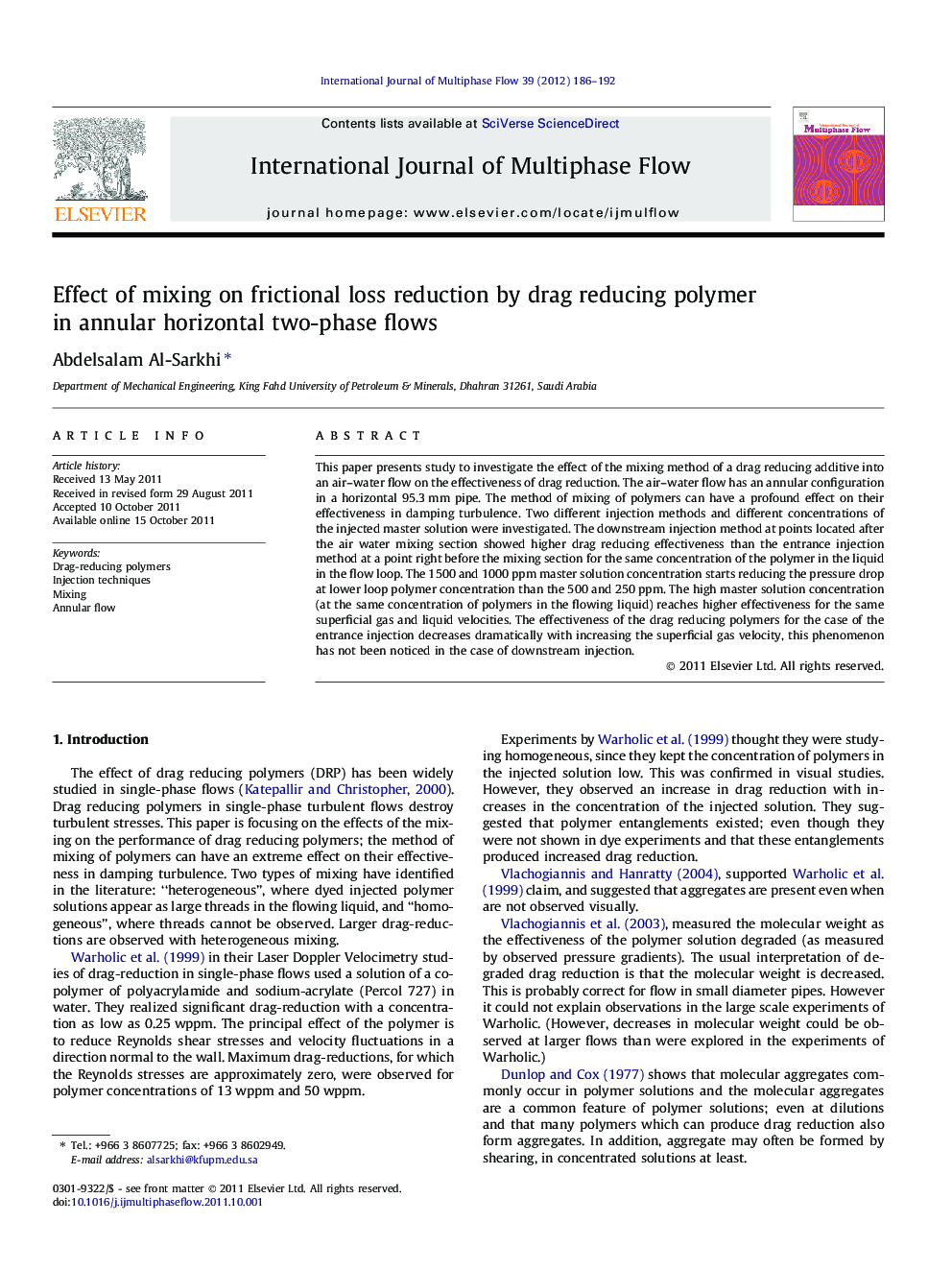| Article ID | Journal | Published Year | Pages | File Type |
|---|---|---|---|---|
| 666795 | International Journal of Multiphase Flow | 2012 | 7 Pages |
This paper presents study to investigate the effect of the mixing method of a drag reducing additive into an air–water flow on the effectiveness of drag reduction. The air–water flow has an annular configuration in a horizontal 95.3 mm pipe. The method of mixing of polymers can have a profound effect on their effectiveness in damping turbulence. Two different injection methods and different concentrations of the injected master solution were investigated. The downstream injection method at points located after the air water mixing section showed higher drag reducing effectiveness than the entrance injection method at a point right before the mixing section for the same concentration of the polymer in the liquid in the flow loop. The 1500 and 1000 ppm master solution concentration starts reducing the pressure drop at lower loop polymer concentration than the 500 and 250 ppm. The high master solution concentration (at the same concentration of polymers in the flowing liquid) reaches higher effectiveness for the same superficial gas and liquid velocities. The effectiveness of the drag reducing polymers for the case of the entrance injection decreases dramatically with increasing the superficial gas velocity, this phenomenon has not been noticed in the case of downstream injection.
► Method of polymers mixing can have a profound effect on their effectiveness in damping turbulence. ► Larger drag-reductions are observed with heterogeneous mixing over the homogeneous. ► Polymer aggregates are damping the turbulence when they are active, i.e. further downstream. ► Injection close to the entrance; aggregates will be breakdown and its efficiency will be reduced. ► Concentration of injected polymer is very important factor for achieving higher drag reduction.
